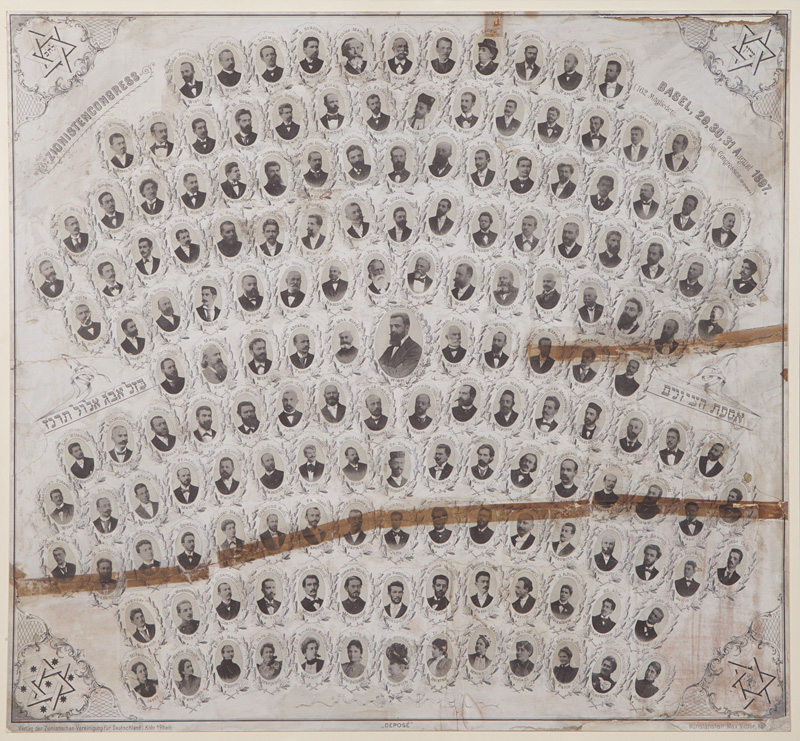The Balfour Declaration and Early Political Zionism
In 1917, the Balfour Declaration marked a pivotal moment in the history of Zionism. Issued by the British government, it expressed support for the establishment of a “national home for the Jewish people” in Palestine, effectively recognizing Zionist aspirations. This declaration resulted from a confluence of factors. Britain sought to secure support from Jewish populations during World War I. The hope was that a Jewish homeland would rally Jewish support and undermine Ottoman control in the region. Leaders like Chaim Weizmann, a prominent figure in the Zionist movement, lobbied effectively, leveraging connections with influential politicians. This diplomatic engagement showcased the growing organizational capacity of the Zionist movement. The dissolution of the Ottoman Empire and subsequent peace negotiations created an opportunity for the establishment of new nation-states. The League of Nations’ mandate system further facilitated British control over Palestine, allowing for increased Jewish immigration. As we continue this series, we will delve deeper into the various stages and milestones in the evolution of Zionism, examining how these historical events shaped the movement’s trajectory and its impact on the modern Middle East.
Establishing Zionist Institutions
As political Zionism gained traction, various institutions were established to facilitate Jewish settlement and governance in Palestine. The Jewish Agency, founded in 1929, became the primary representative body for Jews in Palestine. It coordinated immigration, land acquisition, and social services, effectively functioning as a quasi-governmental entity. Established in 1920, a fundraising organization aimed to support Jewish settlement in Palestine, promoting agricultural and industrial development. This symbolized the economic efforts of Zionist leaders to create a viable Jewish state. Opened in 1925, the Hebrew University in Jerusalem became a center for Jewish scholarship and culture, reinforcing the idea of a distinct Jewish identity linked to the land.
The establishment of these institutions, however, was not met without local resistance. Palestinian Arabs viewed these efforts as encroachments on their land and rights. They perceived the growing Jewish presence and land acquisition as a threat to their own national aspirations and way of life. This local opposition manifested in various forms of protest and resistance, ranging from organized political movements to spontaneous uprisings. Palestinian leaders and organizations vocally opposed Zionist activities, leading to heightened tensions and conflicts between the two communities.
Internal Challenges within the Zionist Movement
Despite these advancements, political Zionism faced numerous internal challenges. The Jewish community was not monolithic; various factions—political, cultural, religious, and socialist—often clashed over strategies and goals. For example, the socialist Zionists, represented by groups like the Bund (a Jewish socialist organization that promoted the rights of Jewish workers and opposed Zionism), sought to create a society based on socialist principles and often clashed with more conservative and nationalist factions who prioritized the establishment of a Jewish state above all else, sometimes even at the expense of other Jewish people.
The influx of Jewish immigrants from diverse backgrounds, including Eastern Europe and Yemen, led to cultural tensions. Disparities in language, customs, and political ideologies posed challenges to cohesive community building. The Great Depression of the 1930s severely impacted funding for Jewish institutions and settlement efforts. Economic hardship made it difficult to sustain immigration and development projects, leading to internal dissent regarding priorities.

Opposition and Conflict
The growth of Zionism was met with significant opposition from both local Arab populations and international actors. The influx of Jewish immigrants and land purchases sparked alarm among Palestinian Arabs. The 1920 and 1929 riots in Jerusalem highlighted growing tensions, as Arab residents protested against perceived encroachments on their land and rights. The 1936-1939 Arab Revolt was a significant uprising against British rule and Zionist policies. It underscored the urgency of Arab national aspirations and intensified conflict between Jewish settlers and Palestinian Arabs. The British government attempted to balance the competing interests of Jewish and Arab populations.
The White Paper of 1939, which limited Jewish immigration and land purchases, reflected a shift in British policy, responding to Arab opposition and growing unrest. Britain decided to limit Jewish immigration to Palestine to 75,000 over five years, with further immigration to be determined by the Arab majority. This decision was influenced by the need to maintain stability in the region and address the concerns of the Arab population, who feared becoming a minority in their own land. This policy change led to disillusionment among Zionists, who felt betrayed after years of support.
One of the most significant events in this context is the Nakba, or “catastrophe,” which refers to the mass displacement of Palestinian Arabs during the 1948 Arab-Israeli War. As a result of the conflict, hundreds of thousands of Palestinians were forced to leave their homes, leading to a refugee crisis that continues to affect the region today. This event is a central point of contention and a source of deep-seated grievances among Palestinians, further fueling the ongoing conflict and criticism of political Zionism.
Impact of World War II
The onset of World War II significantly impacted the Zionist movement. The Holocaust tragically underscored the urgency of establishing a Jewish homeland. As reports of Nazi atrocities reached the world, support for Jewish immigration to Palestine grew, but the conflict also complicated the situation. Despite British restrictions, Zionist organizations sought to facilitate clandestine immigration (Aliyah Bet), bringing Jewish refugees to Palestine. These efforts highlighted the desperation of Jewish communities in Europe. After the war, Jewish paramilitary organizations, such as the Irgun and Lehi, adopted more militant strategies against British rule, advocating for a Jewish state through armed struggle.
During this period, there were accusations of collaboration between some Zionist leaders and the Nazi regime. One of the most notable examples is the Haavara Agreement, signed in 1933, which facilitated the transfer of Jewish assets from Germany to Palestine in exchange for Jewish emigration. This agreement was controversial and criticized by both Zionist and non-Zionist Jews, as well as by members of the Nazi Party. Critics argue that this collaboration was a morally questionable decision, as it involved negotiating with a regime responsible for the persecution of Jews.
Criticism of Political Zionism
Political Zionism has faced criticism from various quarters, both historically and in contemporary discourse. One of the primary criticisms is that it disregards the rights and aspirations of the Palestinian Arab population. Opponents argue that the establishment of a Jewish state in Palestine led to the displacement of Palestinian Arabs and created a long-standing conflict. Critics also highlight the perceived colonialist nature of Zionist policies, arguing that the movement aligns with broader colonial practices of land acquisition and settlement.
Some Jewish communities and groups have criticized political Zionism for its secular and nationalist orientation, which they believe undermines religious and cultural traditions. Ultra-Orthodox Jewish groups, for instance, have historically opposed political Zionism on theological grounds, arguing that the establishment of a Jewish state should come through divine intervention rather than human effort. They believe that the establishment of a Jewish state through political means contradicts the Jewish tenet of “Emunah” (faith in God’s plan) and violates the principle of “Pikuach Nefesh” (preserving human life), especially when it involves endangering lives through conflict.
Conclusion
The rise of political Zionism in the early 20th century marked a transformative period for the Jewish community, as they sought to establish a foothold in Palestine. However, this journey was fraught with internal discord and external opposition. The emergence of conflicting national aspirations—both Jewish and Arab—set the stage for a complex and often contentious relationship that would shape the region’s future. As Zionism continued to evolve, its challenges would only intensify, culminating in a struggle for identity, belonging, and statehood that remains relevant to this day. As we continue this series, we will further explore how Zionism, as a political ideology centered on the establishment of a Jewish homeland in Palestine, reflects the diverse and often divergent perspectives within the Jewish community, highlighting that Judaism is not a monolithic faith but a tapestry of beliefs and ideologies.





